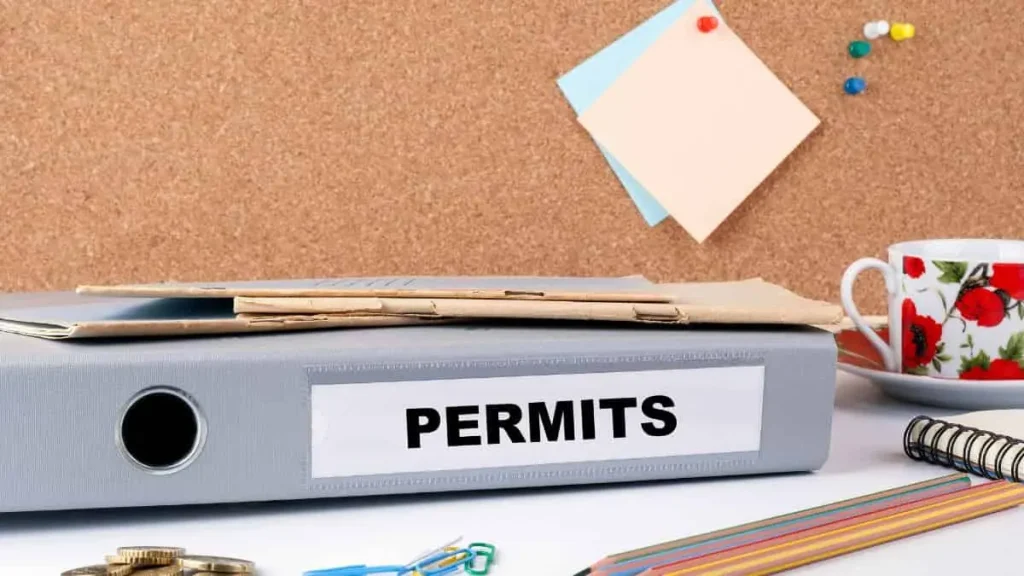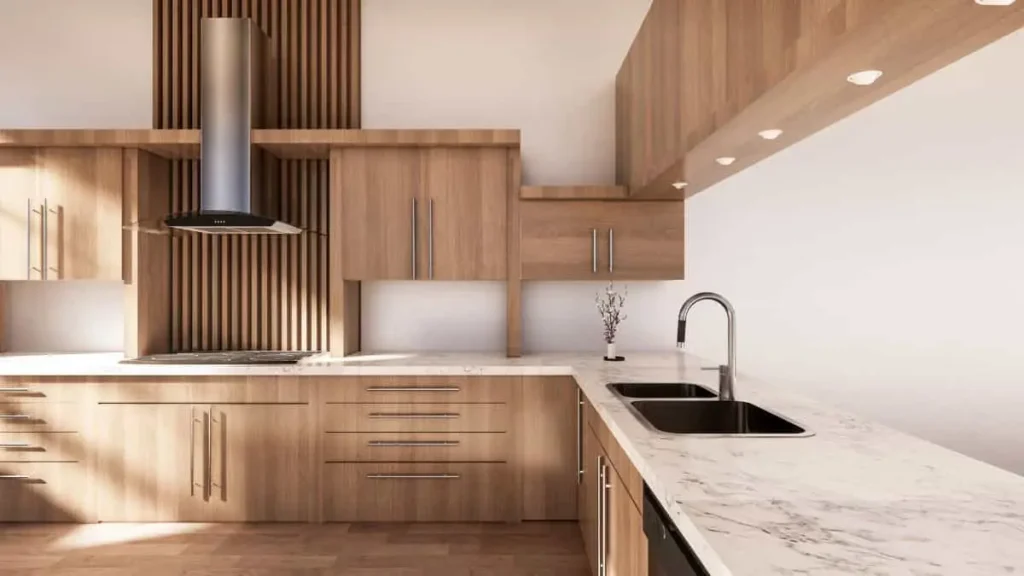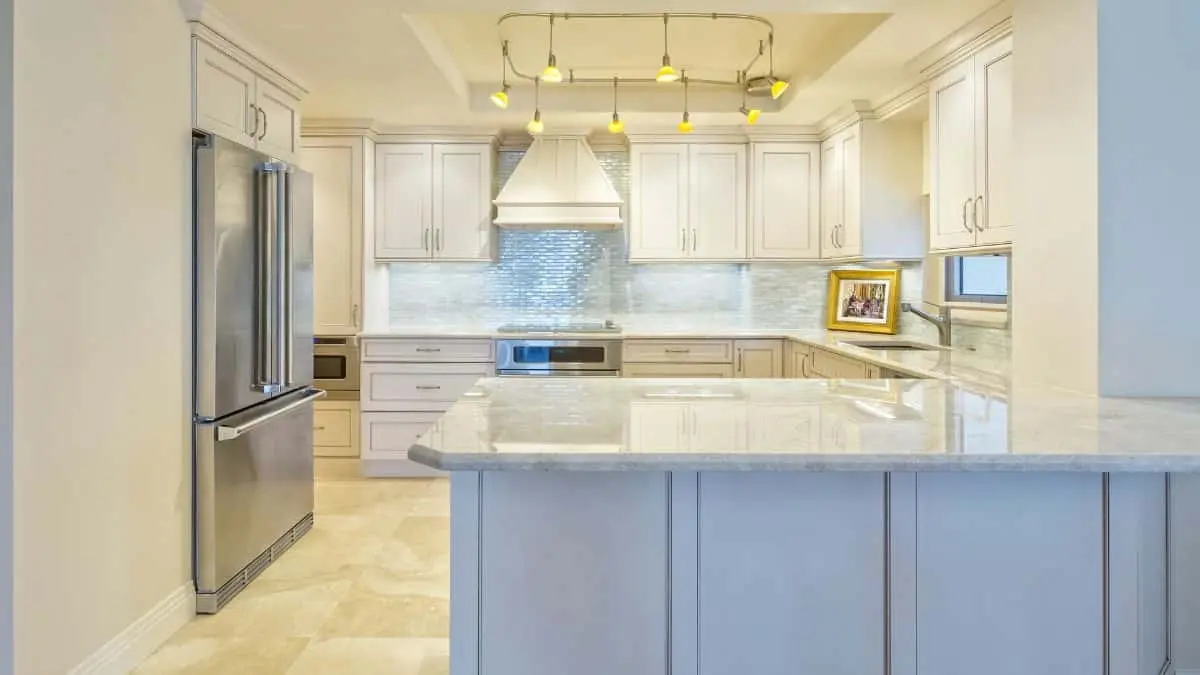Yes, you usually need a permit to remodel a kitchen. Requirements vary by location and scope of the project.
Remodeling your kitchen can greatly enhance your home’s value and functionality. Whether you are updating cabinets, installing new appliances, or changing the layout, permits are often necessary to ensure safety and compliance with local building codes. These permits may cover electrical work, plumbing, and structural changes.
Ignoring permit requirements can lead to fines and complications when selling your home. Always check with your local building department before starting your remodel. Proper permits not only ensure your project is up to code but also provide peace of mind. So, planning ahead and securing the necessary permits is a crucial step in any kitchen remodel.
Permits For Kitchen Remodel

Remodeling your kitchen is an exciting venture, but it comes with important steps like securing permits. Permits for kitchen remodels ensure that your project adheres to local building codes, ensuring safety and compliance. Understanding when and why you need these permits can save you time, money, and headaches down the road.
Understanding Building Permits
Building permits are official approvals issued by local government agencies. These permits authorize you to carry out construction or remodeling projects. They ensure that the work meets safety standards and local building codes. Building permits are essential for several reasons:
- Safety: Ensures that the construction meets safety standards.
- Compliance: Confirms that the work adheres to local building codes.
- Insurance: Helps maintain your homeowner’s insurance coverage.
- Property Value: Proper permits can positively affect your property value.
Without a permit, you might face fines or be required to undo the work. For kitchen remodels, permits might cover electrical, plumbing, and structural changes. Always check with your local building department to understand the specific requirements for your area.
When Are Permits Required?
Permits are not always required for minor changes, but for significant remodels, they often are. Here are some scenarios where permits are typically required:
- Structural Changes: Removing or adding walls.
- Electrical Work: Rewiring or installing new outlets.
- Plumbing Changes: Installing new sinks or moving plumbing lines.
- Major Appliance Installations: Installing new ovens or dishwashers that require new hookups.
- HVAC Work: Installing or moving heating or cooling vents.
For smaller projects like painting, replacing cabinets, or installing new countertops, permits might not be necessary. Always consult your local building authority to be certain. Failing to obtain the necessary permits can lead to significant issues, including fines and difficulties in selling your home.
Benefits Of Obtaining Permits
Securing permits for your kitchen remodel brings many benefits. Here are a few key advantages:
- Safety Assurance: Ensures the work meets all safety standards, protecting your family.
- Legal Compliance: Keeps your project within local laws and codes.
- Avoiding Fines: Prevents potential fines and legal issues from non-compliance.
- Insurance Coverage: Maintains your homeowner’s insurance validity.
- Property Value: Properly permitted work can increase your home’s market value.
Getting permits may seem like a hassle, but it protects you from future issues. It ensures that the work is inspected and meets all safety and legal requirements. Your peace of mind and the long-term benefits outweigh the initial effort involved in obtaining permits.
Permitting Process

Remodeling your kitchen is an exciting project, but it involves more than just choosing new cabinets and countertops. An important aspect of the process is understanding the permitting process. This ensures your remodel adheres to local building codes and regulations, keeping your home safe and compliant.
Research Local Building Codes
Before you start any work, it’s crucial to research local building codes. These codes vary by city and state, and they set the standards for construction practices. Understanding these codes helps you determine what permits you’ll need. Here are some steps to follow:
- Visit your city’s official website and navigate to the building department section.
- Look for resources about residential construction and remodeling.
- Identify specific codes related to plumbing, electrical work, and structural changes.
Some common requirements might include:
| Code Type | Description |
| Plumbing | Regulations on pipe materials and installation methods. |
| Electrical | Standards for wiring, outlets, and circuit breakers. |
| Structural | Rules for load-bearing walls and support beams. |
Submit Permit Application
Once you’ve understood the building codes, the next step is to submit a permit application. This involves gathering all necessary documentation and filling out forms accurately. Here’s a checklist to guide you:
- Complete the permit application form, which is often available online.
- Prepare detailed plans of your kitchen remodel, including dimensions and materials.
- Include any required engineering reports or architectural drawings.
Make sure to double-check your application for completeness before submission. Incomplete applications can delay the approval process. Submit your application to the local building department, either online or in person.
Review And Approval
After submission, your application will go through the review and approval process. This step involves several key actions:
- An inspector reviews your plans for compliance with local codes.
- You may need to provide additional information or make adjustments to your plans.
- Once all requirements are met, the department issues your permit.
The timeline for this process varies, but it typically takes a few weeks. Be proactive by checking the status of your application regularly. If there are any issues, address them promptly to avoid further delays.
Inspections
With your permit approved, the final step is to schedule and pass inspections. Inspections ensure that the remodel meets all safety and code requirements. Key inspection points include:
- Initial Inspection: Occurs before any major work starts.
- Rough-In Inspection: Checks plumbing, electrical, and framing before walls are closed.
- Final Inspection: Ensures everything is completed to code.
Coordinate with your contractor to schedule these inspections at the right times. Each inspection must be passed before moving on to the next phase. Once all inspections are complete, you’ll receive a final approval, and your kitchen remodel will be officially certified as safe and compliant.
Recommended: Common Kitchen Remodeling Mistakes

Consequences Of Not Getting Permits
Remodeling your kitchen can be an exciting project. But, skipping the necessary permits can lead to significant problems. The consequences of not getting permits for your kitchen remodel are serious and can affect your home’s value, safety, and legal standing.
Legal Issues
Without permits, you might face serious legal trouble. Cities and counties have strict rules about building permits. Ignoring these rules can lead to:
- Fines: You could be fined a hefty amount if caught.
- Stop-Work Orders: Authorities can halt your project until you get the permit.
- Legal Action: You might even face lawsuits.
Consider the table below for potential fines in different regions:
| Region | Potential Fine |
| New York | $500 – $10,000 |
| California | $1,000 – $15,000 |
| Texas | $200 – $5,000 |
Skipping permits can also create problems if you plan to sell your home. Buyers and inspectors will ask for permits. Missing permits can delay or cancel the sale.
Safety Concerns
Permits ensure your remodel meets safety codes. Without them, you risk:
- Electrical Hazards: Incorrect wiring can cause fires.
- Structural Issues: Poor construction can weaken your home’s structure.
- Plumbing Problems: Faulty plumbing can cause leaks and water damage.
Safety codes protect you and your family. Ignoring them puts everyone at risk. Always prioritize safety by getting the necessary permits.
Insurance Complications
Insurance companies need proof of permits to cover any damage. Without permits, you could face:
- Claim Denials: Insurers may refuse to pay for damages.
- Policy Cancellation: Your insurance policy could be canceled.
- Higher Premiums: You might have to pay more for coverage.
Check with your insurance provider before starting your remodel. Ensure you have all required permits to avoid future complications.
Factors Influencing Permit Requirements

Remodeling your kitchen can be an exciting project. But before you start, you need to know if you need a permit. Several factors influence the permit requirements. These include your location, the scope of your remodel, and whether you plan any structural changes. Understanding these can save you from legal issues and ensure a smooth remodeling process.
Location
Your location plays a major role in determining permit requirements. Different areas have different building codes and regulations. Here are a few things to consider:
- City vs. Rural Areas: Cities often have stricter rules compared to rural areas.
- Local Building Codes: Check your local building department for specific codes.
- Homeowners’ Associations (HOAs): If you live in a community with an HOA, they might have additional rules.
For example, in New York City, you need a permit for almost any type of renovation. In contrast, some rural areas may have more lenient rules. Always verify with your local authorities to avoid fines.
Scope Of Remodel
The extent of your kitchen remodel also influences permit requirements. Minor changes might not need a permit, but extensive renovations usually do. Consider the following:
- Cosmetic Changes: Painting walls or replacing countertops typically don’t need a permit.
- Major Upgrades: Installing new plumbing, electrical work, or changing the layout usually requires a permit.
Here’s a table to help you understand better:
| Type of Work | Permit Required |
| Painting Walls | No |
| Replacing Countertops | No |
| Installing New Plumbing | Yes |
| Electrical Work | Yes |
Always check the specific requirements for your area. Permits ensure that the work meets safety standards and codes.
Structural Changes
If your kitchen remodel involves structural changes, you almost always need a permit. Structural changes affect the integrity of the building. Here are examples of structural changes:
- Removing or Adding Walls: This can change the load distribution of your home.
- Changing Windows or Doors: Altering openings in the walls usually needs approval.
- Moving Plumbing or Electrical Systems: This involves altering the core systems of your home.
Structural changes not only need a permit but often require inspection. This ensures the work is done correctly and safely. Failing to get a permit for structural changes can result in hefty fines and even require you to undo the work.
Always consult a professional before making any structural changes. They can guide you through the permit process and ensure compliance with local building codes.
Read Also: How to Set Up a Temporary Kitchen During Remodel
Cost Of Permits
Remodeling your kitchen can be an exciting project. Before you start, you might wonder, “Do I need a permit to remodel my kitchen?” Understanding the cost of permits helps plan your budget. Permits are essential to ensure safety and compliance with local codes. This section will dive into the permit fees and additional expenses involved.
Permit Fees
Permit fees vary depending on your location and the scope of your project. Typically, these fees range from $100 to $1,000. Smaller projects, like replacing cabinets or countertops, may incur lower fees. Extensive renovations involving structural changes often cost more.
Here is a breakdown of common permit fees:
| Type of Permit | Estimated Cost |
| Electrical Permit | $50 – $200 |
| Plumbing Permit | $100 – $500 |
| Building Permit | $200 – $1,000 |
Electrical permits ensure that new wiring and outlets meet safety standards. Plumbing permits cover changes to water lines, sinks, and dishwashers. Building permits address structural changes, like knocking down walls or adding windows.
Some cities base fees on the project’s value. For instance, a project valued at $10,000 might have a permit fee of 1-2% of the total cost. Always check with your local building department for specific rates and requirements.
Additional Expenses
Beyond permit fees, other expenses might arise. Inspection fees often accompany permits, ensuring each phase of your project complies with standards. These fees range from $50 to $200 per inspection.
Consider the following additional expenses:
- Plan Review Fees: Some departments charge to review your remodeling plans, typically $50 to $150.
- Architect or Engineer Fees: Structural changes may require professional drawings, costing $500 to $2,000.
- Time and Delays: Permits can take time to process, potentially delaying your project and increasing overall costs.
Here’s an overview of potential additional expenses:
| Expense Type | Estimated Cost |
| Inspection Fees | $50 – $200 per inspection |
| Plan Review Fees | $50 – $150 |
| Architect Fees | $500 – $2,000 |
While these additional expenses might seem overwhelming, they are crucial for a safe and compliant remodel. Planning ahead ensures you can budget accordingly and avoid surprises.
Tips For A Smooth Permitting Process

Remodeling your kitchen can be an exciting project, but it often requires a permit. Navigating the permitting process can feel overwhelming. To help, we’ve compiled some tips for a smooth permitting process. Follow these guidelines to ensure your kitchen remodel goes off without a hitch.
Consult With A Professional
Before diving into your kitchen remodel, it’s essential to consult with a professional. An experienced contractor or architect can provide valuable insights and ensure your project complies with local regulations. Here are some benefits of consulting with a professional:
- Expert Advice: Professionals can identify potential issues early.
- Accurate Estimates: They can provide realistic cost and time estimates.
- Code Compliance: They ensure your remodel meets all local building codes.
Consider creating a table to compare different professionals:
| Professional | Experience | Cost | Reviews |
| Contractor A | 10 years | $$ | 4.5/5 |
| Architect B | 15 years | $$$ | 4.8/5 |
Choosing the right professional can make the permitting process much smoother. Their expertise can save you time and money.
Plan Ahead
Proper planning is crucial for a smooth permitting process. Start by creating a detailed plan for your kitchen remodel. This should include:
- Project Scope: Define what changes you want to make.
- Budget: Set a realistic budget for your project.
- Timeline: Create a timeline for each phase of the remodel.
Here’s an example of a basic project plan:
| Phase | Duration | Tasks |
| Planning | 2 weeks | Consult professionals, finalize design |
| Permitting | 4 weeks | Submit applications, await approvals |
| Construction | 8 weeks | Demolition, installation, inspections |
A well-thought-out plan helps streamline the permitting process. It also ensures that you stay on schedule and within budget.
Follow Building Codes
Adhering to local building codes is vital. These codes ensure safety and quality. Here are some key points to consider:
- Electrical Work: Ensure all electrical work complies with local standards.
- Plumbing: Properly install and inspect all plumbing systems.
- Structural Changes: Any structural modifications must meet code requirements.
Check with your local building department to get a copy of relevant codes. This can help you understand what is required. Here’s a quick checklist to follow:
| Code Area | Requirement | Checked |
| Electrical | Up to code | |
| Plumbing | Proper installation | |
| Structural | Meets standards |
Following building codes can prevent delays and additional costs. It also ensures the safety and longevity of your remodel.
Keep Documentation
Maintaining thorough documentation is crucial for a smooth permitting process. This includes:
- Permits: Keep copies of all submitted and approved permits.
- Plans: Save detailed plans and blueprints of the remodel.
- Receipts: Keep receipts for materials and labor costs.
Organizing your documents can be done using a digital or physical folder. Here’s an example of how to categorize your files:
| Category | Description |
| Permits | All permit applications and approvals |
| Plans | Designs, blueprints, and revisions |
| Receipts | Invoices and receipts for expenses |
Keeping documentation organized helps you stay on top of the process. It also provides a record in case of disputes or inspections.
Conclusion
Understanding permit requirements for kitchen remodeling is crucial. Avoid legal issues by checking local regulations. Always consult with professionals. Proper permits ensure safety and compliance. Your dream kitchen starts with the right permissions. Plan wisely and remodel confidently. Following these steps can help you achieve a successful kitchen renovation.



